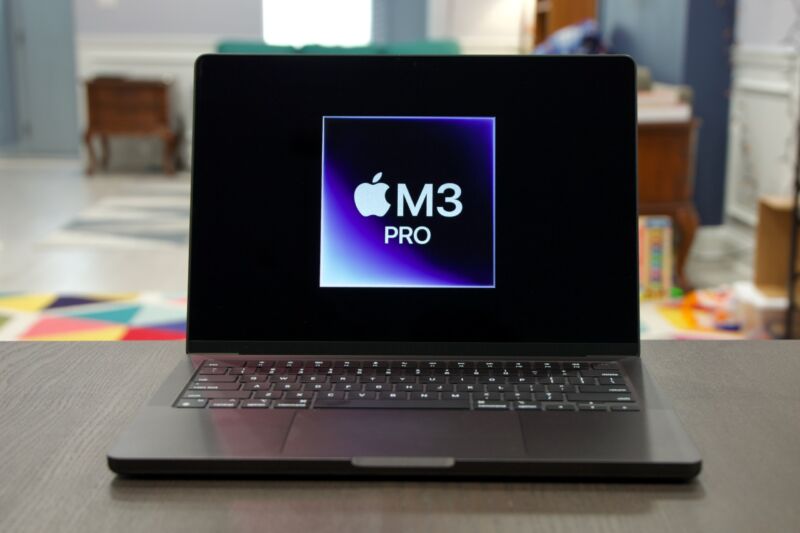Testing Apple’s M3 Pro: More efficient, but performance is a step sideways

Enlarge / A 14-inch MacBook Pro with Apple's M3 Pro inside. (credit: Andrew Cunningham)
When Apple announced the first three chips in its M3 processor family, the M3 Pro immediately stood out. Not because it was a huge leap over the prior generation, but because it was the first time we had seen Apple reduce key specs like transistor count, CPU and GPU core count, and memory bandwidth from one generation to the next.
Transistor count is an imperfect proxy for performance, but adding transistors is one of the primary ways to improve a chip's performance (ramping clock speeds up is another, which we'll revisit shortly). Both the M3 and M3 Max feature substantial transistor count boosts compared to their M2 counterparts—from 20 billion to 25 billion for the M3, and from 67 billion to 92 billion with the M3 Max. The M3 Pro has 37 billion, down from 40 billion in the M2 Pro.
That didn't tell us much by itself, but it did set us up to expect an M3 Pro that was a modest-at-best improvement over the M2 Pro. Now that we've been able to test one in a 14-inch MacBook Pro, we can confirm that this is the case. The M3 Pro is still decidedly faster than the regular M3, and building a chip with fewer transistors on a newer 3 nm manufacturing process has other benefits. But there's a wider performance gap between the M3 Pro and M3 Max than there was in the M2 generation, and you'll need to wait for the M4 generation before you see substantially faster Pro chips.
Read 14 remaining paragraphs | Comments
from Tech – Ars Technica https://ift.tt/A9bPu43
Comments
Post a Comment